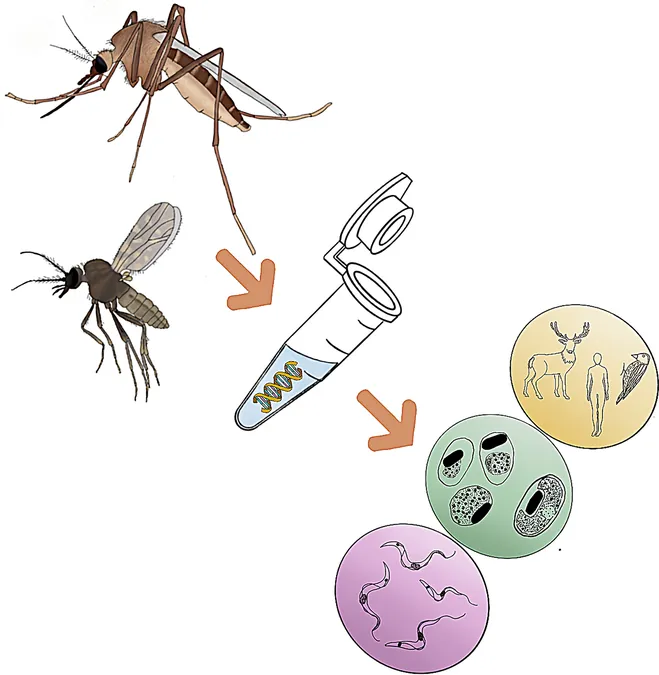
Unlocking the Secrets of Insect Feeding: A Game-Changer in Understanding Parasite Interactions and Host Patterns
2025-07-20
Author: Mei
Exploring the Ecosystem: Where the Study Began
Insects were meticulously collected across three distinct regions in Czechia: Choteč known for its dry conditions, Zeměchy with seasonal water bodies, and Milovice forest, a thriving deer reserve. Each site presented unique ecological characteristics contributing to variations in insect behavior.
Innovative Trapping Techniques Unveil Hidden Patterns
Between May and August from 2017 to 2021, haematophagous insects were captured using advanced CDC light traps baited with dry ice. This clever strategy allowed researchers to capture and analyze over 10,000 female mosquitoes and several biting midges.
Diving Deep: Analyzing Blood Meals and Parasite Presence
The research didn't just stop at capturing these astonishing insects. Extensive dissection and DNA extraction were employed to identify blood sources and the presence of parasites. Different species of mosquitoes showed a remarkable aptitude for feeding on various hosts, revealing chilling insights about potential pathogen transmission.
Surprising Findings: Who’s Feeding On Whom?
Delving into the blood meals of captured mosquitoes, researchers uncovered an unexpected diversity in dietary preferences. Notably, only mammalian blood was identified in species like Aedes, Anopheles, and others, highlighting a strong inclination towards feeding on deer and even humans.
A Methodological Marvel: Comparing Approaches for Deeper Insights
The dual approach of blood meal barcoding and molecular detection of parasites has proven groundbreaking. While barcoding revealed host preferences, parasite detection illuminated the long-term relationships these insects have with their hosts, providing deeper insights into transmission dynamics.
The Key Role of Culex Pipien: The Ultimate Vector?
Among the many findings, one species stood out: Culex pipiens. Known for its adaptability, this mosquito exhibited a diverse feeding pattern, consuming avian, mammalian, and even amphibian blood. This versatility could place it at the forefront of vector studies, particularly regarding the transmission of avian malaria.
A Closer Look at the Parasitic Landscape
Throughout the study, a staggering variety of haemosporidian and trypanosome parasites were identified. While avian parasites dominated, mammalian trypanosomes were also detected, showcasing the intricate ecological web and highlighting the potential risk of shared pathogens between wildlife and humans.
Conclusion: What This Means for Future Research
This comprehensive analysis opens new avenues for understanding host-feeding patterns and the dynamics of parasite transmission among insects. The combination of blood meal analysis and molecular techniques not only reveals shocking dietary preferences among these insects but also emphasizes the importance of continued research in vector biology to combat potential zoonotic diseases.



 Brasil (PT)
Brasil (PT)
 Canada (EN)
Canada (EN)
 Chile (ES)
Chile (ES)
 Česko (CS)
Česko (CS)
 대한민국 (KO)
대한민국 (KO)
 España (ES)
España (ES)
 France (FR)
France (FR)
 Hong Kong (EN)
Hong Kong (EN)
 Italia (IT)
Italia (IT)
 日本 (JA)
日本 (JA)
 Magyarország (HU)
Magyarország (HU)
 Norge (NO)
Norge (NO)
 Polska (PL)
Polska (PL)
 Schweiz (DE)
Schweiz (DE)
 Singapore (EN)
Singapore (EN)
 Sverige (SV)
Sverige (SV)
 Suomi (FI)
Suomi (FI)
 Türkiye (TR)
Türkiye (TR)
 الإمارات العربية المتحدة (AR)
الإمارات العربية المتحدة (AR)